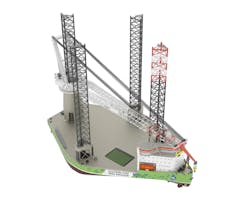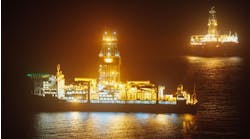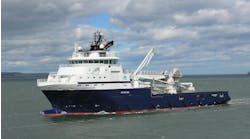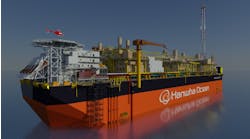Offshore staff
ULSTEINVIK, Norway – Ulstein has introduced its second hydrogen hybrid design for the offshore wind industry, the ULSTEIN J102 zero emission wind turbine installation vessel (WTIV).
The vessel can operate 75% of the time in zero emission mode, the company said. Using readily available technology, the additional cost is limited to less than 5% of the total capex.
Most new jackup designs feature a battery hybrid system in addition to diesel gen sets, with a future option for hydrogen-powered fuel cell system. The downside of a high-power battery energy storage system is its heavy weight and cost. According to the company, that is not beneficial for a WTIV design, where weight savings are essential for minimizing elevated weight and optimizing the variable deck load.
Ko Stroo, product manager at Ulstein, said: “We have carefully analyzed the operational cycle of WTIVs and looked at the power demand in the various modes of operations. This analysis showed that ca. 75% of its time, a WTIV is in jacked-up position performing crane operations. Using a combination of a hydrogen fuel cell system and a relatively small battery energy storage system is then sufficient to meet the overall power demand on board and crane peak loads.”
The company said the hydrogen hybrid system of the ULSTEIN J102 design has been developed in such a way, that future developments in hydrogen technology can easily be fitted into the vessel without major modifications.
“The limited availability of hydrogen bunker infrastructure in ports is often seen as a major hurdle. With our modular storage lay-out, we want to break the chicken and egg dilemma,” said Stroo. “It creates flexibility to operate the vessel worldwide, even when bunker infrastructure is not yet present.”
The main features of ULSTEIN’s J102 design are:
- CO2 reduction per year: 4,000 mt
- Emission reduction per installation cycle: 25%
- H2 fuel cell system: PEM fuel cell
- H2 storage system: 7 x 40 ft containers compressed H2
- Battery energy storage.
10/02/2020




